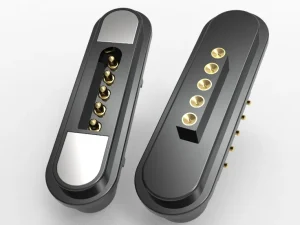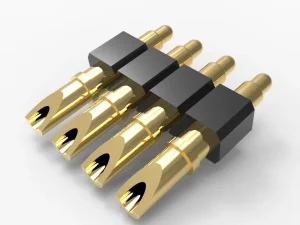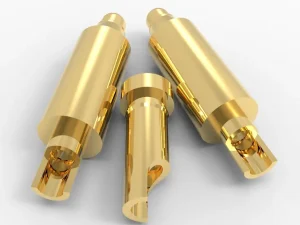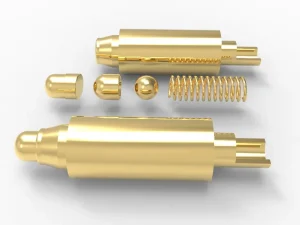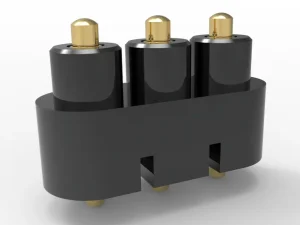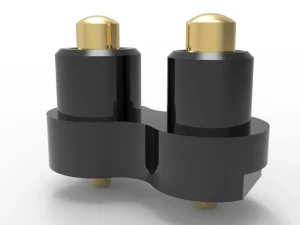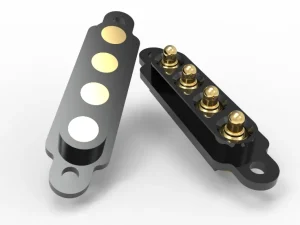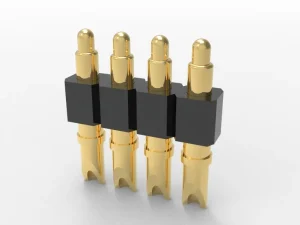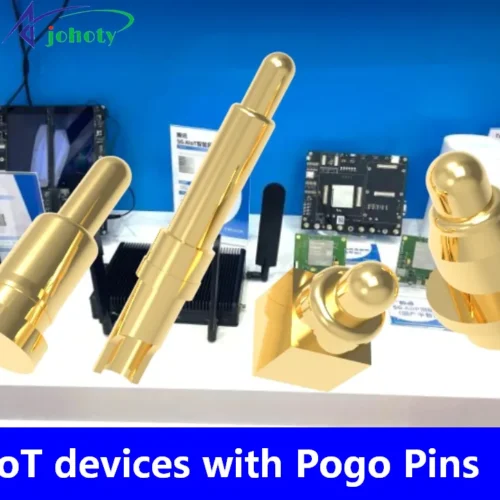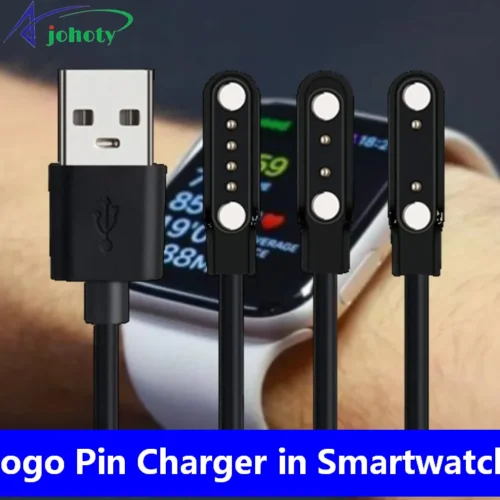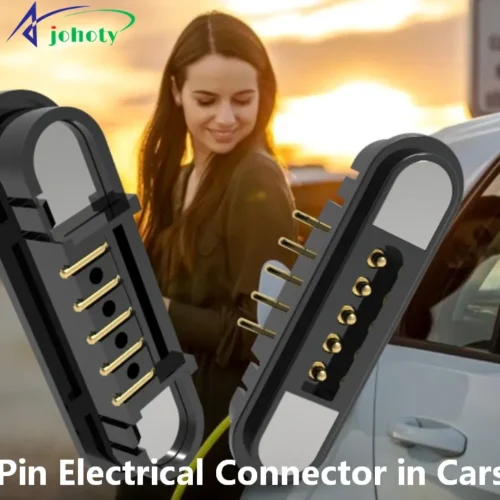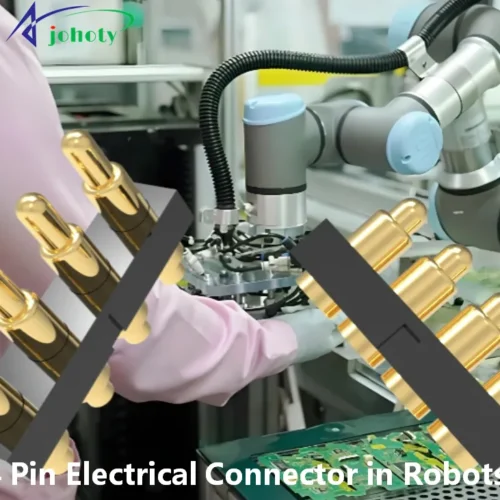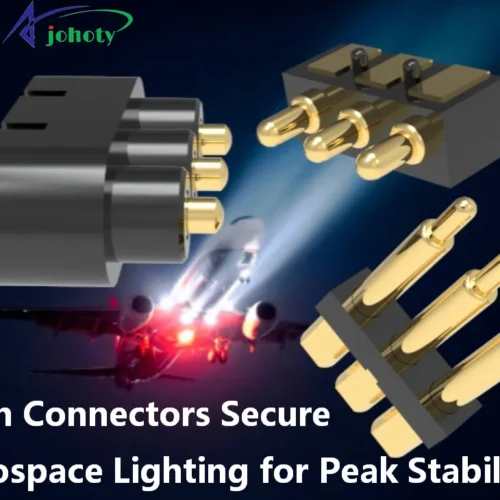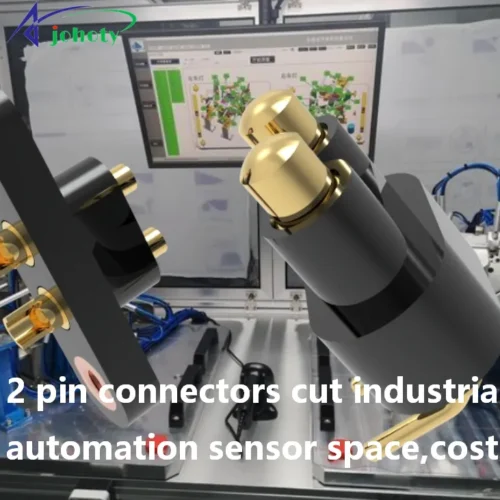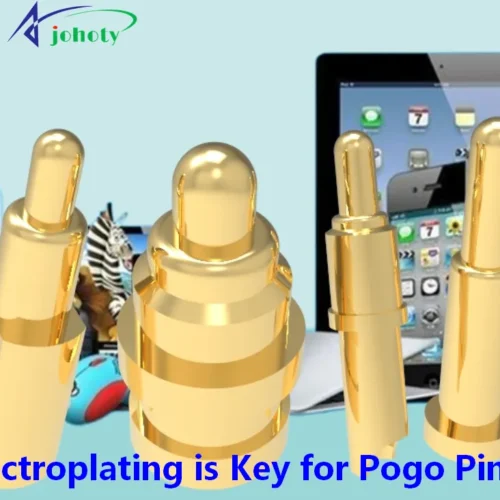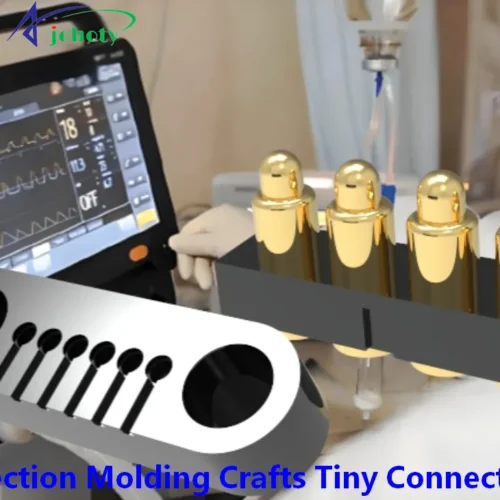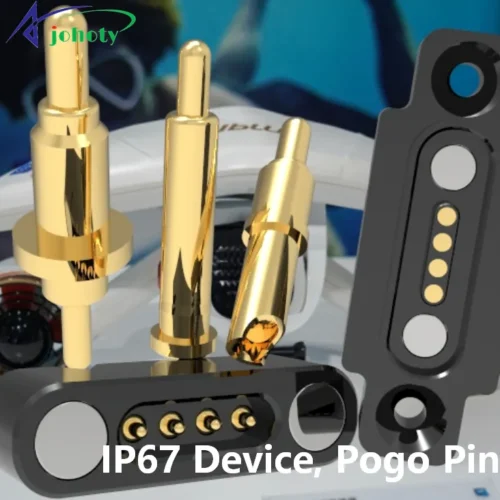How to Use Wire Connectors with Pogo Pins: Best Engineering Steps to Boost Contact Performance, Reliability, and Design Precision. Read Now!
Introduction:
How to Use Wire Connectors, do you really use it correctly? How do you choose appropriate pogo pins and cable structures for frequent plugging, small-sized wiring, and rapid docking of precision modules? What solution is effective to avoid reliability hazards, such as poor contact, looseness, and detachment? What kind of connection method can balance high conductivity and easy maintenance?
In practical projects, many engineers encounter the problem of how to achieve reliable, low impedance, and long-life electrical connections under high-density, small space, and high-frequency plugging conditions? This is precisely why it becomes a hot topic for How to Use Wire Connectors with Pogo Pins.
This article will start from the perspective of an engineer, explaining the principles and key considerations of How to Use Wire Connectors. And, focusing on the most easily overlooked but critical best steps in practical applications. Such as selection matching, structural fixation, contact testing, etc.
Whether you are developing testing fixtures, wearable devices, or precision medical connectivity solutions, How to Use Wire Connectors will help you avoid detours and quickly achieve high reliability connectivity design goals.
Why are more and more engineers choosing pogo pin wire connectors?
Complex devices are becoming increasingly miniaturized and modular, and engineers’ requirements for connectors are undergoing profound changes. Traditional pin or soldering connection methods generally suffer from inconvenient installation, unstable contact, and difficult maintenance. Now, Johoty’s pogo pins are gradually becoming the preferred choice for European and American engineers.
What is the reason why more and more engineers are abandoning traditional cable solutions and turning to pogo pin wire connectors? They shine in high-precision medical, automotive, robotics, semiconductor testing, and more. Even they dominate Google hot search topics such as’ How to Use Wire Connectors’. This is not just a small connector, but a systematic solution that is precise, repeatable, and has extremely low maintenance costs:
Faster connection: Plug in and out in seconds, greatly improving assembly efficiency
More durable: Supports tens of thousands of insertions, ideal for high-frequency testing or module replacement scenarios
High compact: suitable for small spaces and high-density wiring designs
More stable signal: The spring structure ensures continuous contact pressure, reducing interference and loss
Plug and play experience: completely restructuring the design thinking of “How to Use Wire Connectors”
This is precisely why more and more engineers are no longer satisfied with standard answers when searching for pogo pin solutions. From the prototype development laboratory in Silicon Valley to the manufacturing front line in Texas, engineers are eager to learn more. If you are designing the next generation of high-performance devices and want to simplify assembly and improve connection reliability. You absolutely cannot ignore the power of Johoty’s pogo pin cable connector.
Recommended Connection Steps by Engineer Johoty: How to Use Wire Connectors?
The starting point for truly understanding how to use wire connectors
Engineer Johoty emphasized that before figuring out how to use wire connectors, customers need to first tell us in what environment, what devices to connect to, and what functions to implement. Connectors are not universal accessories, and their performance varies greatly in high-voltage circuits, micro signal transmission, high-frequency communication, or extreme environments. To ensure that your connector is stable, safe, and easy to maintain, you must first accurately identify the following parameters:
Mechanical parameters: Structural matching is the foundation for stable connections
Connector shape and size: Does it fit the installation space? Does it comply with the reserved equipment structure?
Pitch and Pin Count: Are the number and spacing of signal channels compatible with PCB or port specifications?
Working stroke and spring force: Is the insertion and removal feel appropriate? Is there any over plug protection? Is it earthquake resistant and prone to detachment?
Mechanical strength and locking method: Do they have anti vibration buckle positions? Does it support blind insertion or quick installation?
Electrical parameters: Only stable performance can be considered reliable
Rated current/voltage/frequency: is it for power supply or signal? Does it involve high-frequency or high-speed data?
Contact impedance: Is it less than the industry recommended value to avoid power consumption and heat generation?
Magnetic contact structure: Is magnetic attraction used for docking? Can it reduce wear and improve insertion efficiency?
Frequency and lifespan requirements for plugging and unplugging: In industrial automation scenarios, is it necessary to perform stable plugging and unplugging 10,000 or 200,000 times?
Environmental and Protection Requirements: Connectors are not only used in clean laboratories
Waterproof rating: Is it suitable for outdoor, humid, high humidity and other scenarios?
Plating process: gold plating, tin plating, or other methods? Can long-term conductivity and corrosion resistance be guaranteed?
Application environment temperature range: Is it operating under high temperature, low temperature, or alternating cold and hot conditions?
Choosing the appropriate Pogo Pin model: How to use Wire Connectors?
Single plunger and double ended pogo pin:
Single plunger pogo pin is suitable for ordinary connection needs and is suitable for fast and simple applications.
Double ended pogo pin can provide bidirectional current path, suitable for higher electrical performance and ensuring more stable contact.
Customized tail welding method or cable:
According to different applications, Johoty can customize the tail welding method or choose pre installed cables. This can provide more flexibility and installation convenience, reducing assembly time. Include: through hole, surface mounting, right angle, bending type, double-ended, threaded pogo pins, soldering cup.
Plunger shape selection:
The choice of plunger shape directly affects the stability and lifespan of contact. For example, circular, pointed, conical, flat, cup, claw, ball, star, etc. Different shapes can meet different contact requirements and pressure distribution.
Round head is suitable for applications with slight pressure. The pointed tip is suitable for precise connection and provides stronger contact force. Claw heads can maintain better contact on uneven surfaces.
Spring force parameters:
The magnitude of spring force directly affects contact stability and lifespan. Appropriate spring force can ensure connector maintains stable contact state after long-term use, reducing contact failures.
Surface coating selection:
The material and type of surface coating determine the corrosion resistance and conductivity of pogo pins. Common coating materials include gold, silver, nickel, palladium, platinum, rhodium, ruthenium, etc. Choosing the appropriate coating can improve connection durability in high temperature and humidity.
Gold plating: high conductivity and corrosion resistance, suitable for high-end electronic applications. Silver plating: relatively economical, with good conductivity, suitable for conventional applications. Palladium coating: resistant to high temperatures, suitable for more demanding environments.
Confirm connection method and cable structure: How to Use Wire Connectors?
Pin type docking vs board end contact
Pin type docking: suitable for applications that require fast and easy connections, used for high-frequency connections. The pin type connectors can provide stable contact performance and are easy to install.
Board end contact: It is usually used for fixed connections and is suitable for situations where frequent connections are not required. Commonly seen in communication devices and high-end electronic products that require higher stability.
The necessity of sealing rings and dust covers
Sealing ring: In harsh environments, the sealing ring can effectively prevent the intrusion of moisture and dust. It ensures electronic components inside the connector are not damaged and is suitable for outdoor and industrial automation systems.
Dust cover: The dust cover can protect the connector when not in use, prevent dust and impurities from entering, and extend the service life of the connector.
Cable requirements: high flexibility and selection of shielding layer
High flexibility cables: If the application involves frequent bending or vibration, it is crucial to choose cables with high flexibility. It can ensure that cables will not break when subjected to high mechanical pressure, and is suitable for robots, medical equipment, etc.
Shielding layer: In environments with strong EMI, a shielding layer is essential. It can effectively minimize interference of external electromagnetic waves on signals and ensure signal transfer stable. Commonly used in data transmission and high-frequency communication equipment.
Assembly and testing precautions, How to Use Wire Connectors?
In practical applications, how to use wire connectors requires suitable products, as well as assembly details and testing verification. Proper assembly and comprehensive testing are key steps in ensuring stable performance and extending connectors‘ service life.
Injection molding vs ordinary molding:
Insert molding is the process of integrating wire connectors or pogo pin connectors with plastic. It can effectively enhance overall structural stability, protective performance, and environmental resistance, and is suitable for high-end electronic devices.
Ordinary molding has a simple process, lower cost, and is suitable for the mid-range market. But its durability and protective performance are slightly inferior. When making a selection, it should be comprehensively judged based on the product positioning and application environment.
Stress control during crimping or welding of cables:
Whether using crimping or welding methods, mechanical stress on cables and contact points must be strictly controlled. Avoid virtual soldering, wire breakage, or poor contact caused by stress concentration.
By using specialized crimping molds or precise temperature controlled welding, damage to cable cores and insulation layers can be minimized to the greatest extent possible.
Continuity & Contact Resistance Testing:
Conduct continuity testing using professional fixtures to ensure that each connection point circuit is unobstructed without any open circuits.
Simultaneously measure the contact resistance, evaluate the stability of the connector under different loads, and ensure the reliability of signal transmission or power supply.
Durability & Aging Testing:
Connectors need to undergo rigorous insertion and extraction aging tests and cyclic bending tests to evaluate their durability and fatigue resistance after long-term use.
Aging testing can simulate the effects of repeated connections, vibrations, temperature differences, and other factors in actual working environments. This ensures client’s product maintains excellent performance throughout its entire life cycle.
Structural fixation and integration: How to use wire connectors?
In fully understanding the process of How to Use Wire Connectors, structural fixation and product integration are the final key steps. It is to ensure the long-term stable operation of the connectors. A good fixing method can enhance reliability and optimize overall mechanical performance and user experience of the product.
Positioning Pegs
By designing reserved positioning columns, precise alignment can be achieved during assembly. It can avoid displacement or uneven force on the connector during use. This will significantly improve the consistency and stability of customer products.
Snap Fit
Adopting a buckle structure, quick assembly and disassembly can be achieved without adding screws. Simultaneously maintaining good fixation, it is very suitable for lightweight and mass production needs.
Screw Mounting
For application scenarios that experience significant mechanical stress or vibration, it is recommended to use screw fixation. Ensure that the connector is firmly locked onto the housing or PCB board to avoid loosening issues after prolonged use.
Magnetic Fixation
In portable devices or applications require frequent assembly, modular integration of connectors can be achieved through magnetic attraction structures. Magnetic pogo pin connector is both convenient and maintains excellent fixation performance.
Johoty Customized Modular Shell Solution
To further simplify the design work of engineers, Johoty offers a variety of customized modular housing solutions. Covering different materials, sizes, fixing methods, and protection level options.
Through integrated design, the connector and housing are highly matched, which can significantly save customers development time. Importantly, Johoty can significantly improve final device’s overall performance and reliability.
7 common questions and pitfalls avoidance: How to use wire connectors?
poor contact:
The reasons are often due to loose or contaminated terminal crimping. It is recommended to use professional crimping tools, use certified terminal materials, and clean the contact surface before assembly.
Insertion and extraction offset:
Excessive angle or uneven force during installation can easily cause the pogo pin to bend. The correct method is to plug and unplug in a straight line, and if necessary, design foolproof structures to assist in positioning.
Insufficient durability:
Insufficient repeated insertion and extraction testing, or improper material selection. Connectors that have passed over 10000 life tests should be prioritized to improve overall system reliability.
Crimping error:
Incorrect crimping can lead to unstable electrical performance. Be sure to follow the How to Use Wire Connectors standard process and select crimping molds and parameters that match the specifications.
Insulation damage:
Excessive wire stripping and crimping may potentially damage the insulation layer. The stripping length should be strictly controlled to avoid poor contact caused by exposed or too short metal.
Insufficient protection level:
Using ordinary connectors outdoors or in high humidity environments can easily cause short circuits due to moisture. Waterproof connectors with IP67 or higher protection level must be selected according to the usage environment.
Neglecting stress control:
Long term stress or vibration can cause cracking in solder joints and crimping areas. It is recommended to introduce flexible leads and stress relief structures during the design phase to ensure long-term stability of the connection.
Conclusions: How to Use Wire Connectors with Pogo Pins?
After Johoty’s detailed explanation, I believe you have mastered the best steps to use wire connectors in combination with pogo pins. From contact accuracy to durability improvement, optimizing every detail is an indispensable part of efficient electrical connections.
A correct understanding of how to use wire connectors can significantly improve assembly efficiency. Effectively avoiding common faults and adding points to equipment performance and reliability. Choosing Johoty’s professionally customized pogo pins or pogo pin connectors is crucial for complex or high-frequency plugging environments. This is a crucial and important step to ensure your system’s safe and stable operation.
If you want to further and detailedly understand how to use wire connectors on custom applications. Or you are looking for high-precision, high-durability pogo pins and pogo pin connectors that are suitable for your project. You are welcome and highly appreciated to contact Johoty at any time. Because we have extensive experience in connector design, Johoty can tailor the best and flexible solution for your device.
Take immediate action and let Johoty assist you with your engineering projects, enabling a more efficient and reliable connectivity experience! For more information on how to use wire connectors and customized services, please contact Johoty now.

